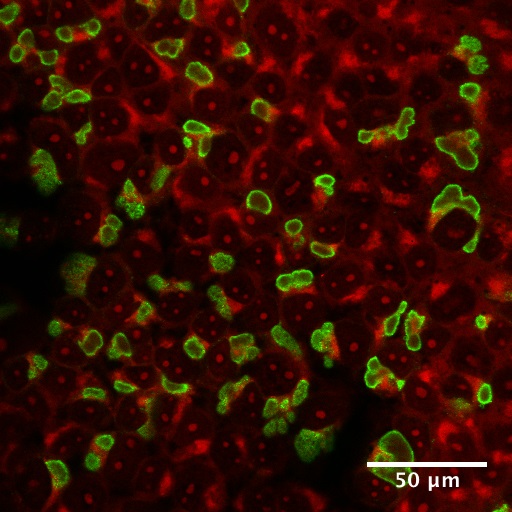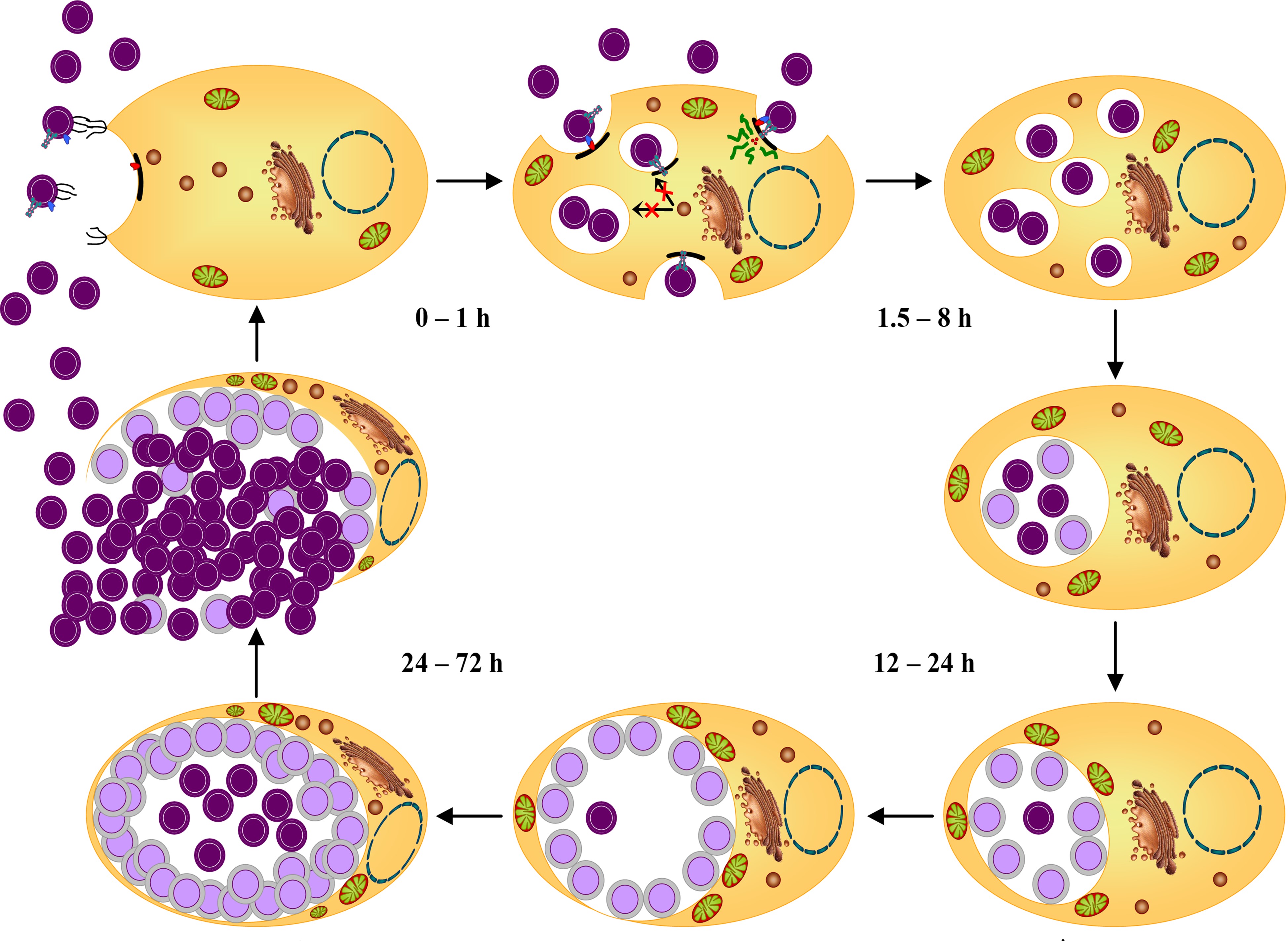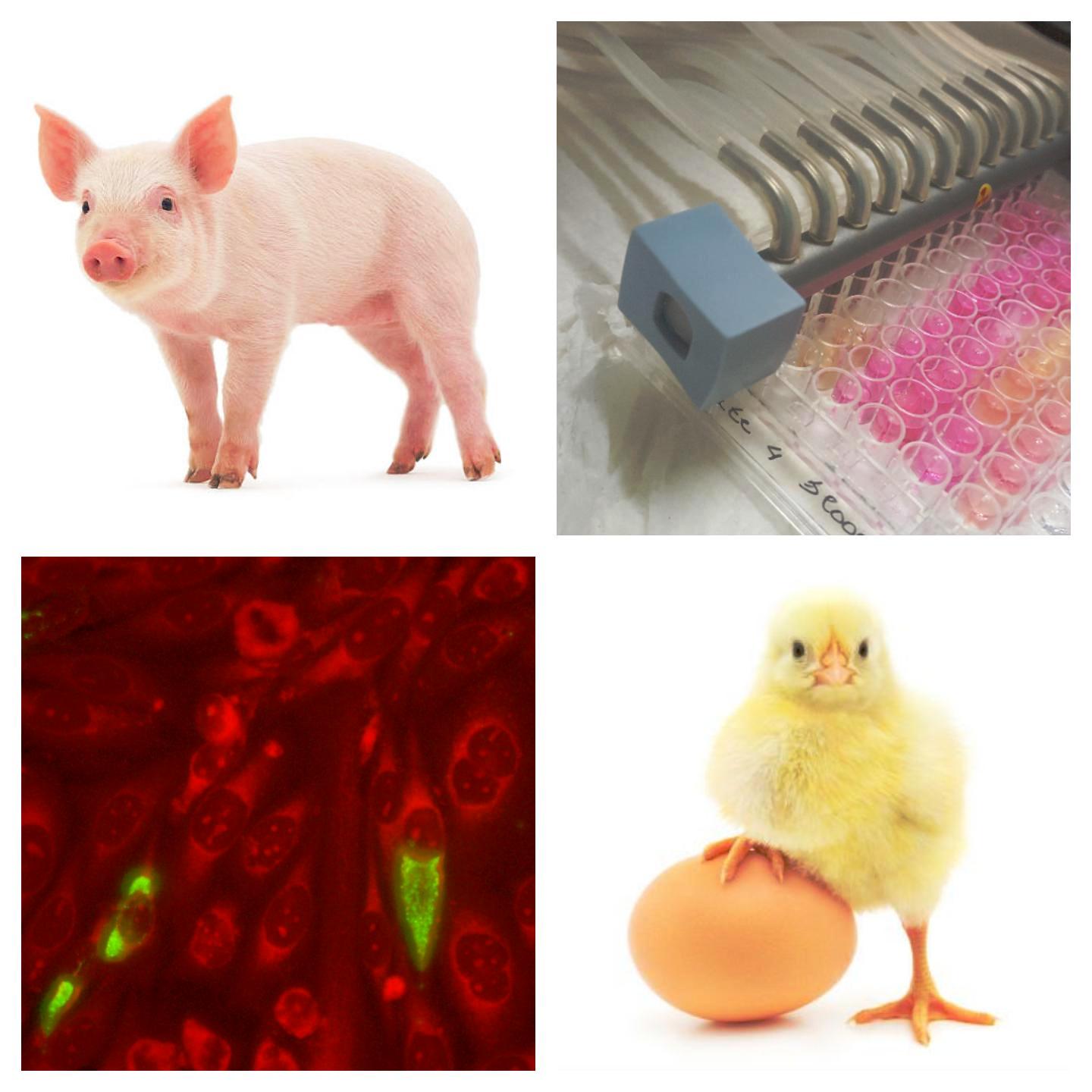
What is chlamydia?
Chlamydia is a bacterium in an extended family known as Chlamydiaceae.
Chlamydia can only replicate inside a host cell.
Chlamydia causes infections in both humans and animals and some of the infections in animals can be transmitted to humans.
Figure: chlamydiae (green) inside a host cell (red).
Infection method
Chlamydia has a unique replication cycle (see figure).
The bacterium (purple) first adheres to the host cell and afterwards invades the cell.
Once inside the cell, the bacterium (light purple) begins to multiply. The cell fills up until it bursts after which the new bacteria (purple) are released, attach to new cells and the process repeats itself.
A complete replication cycle takes about 48 hours to 72 hours.


Why research?
Antibiotics are currently the only effective drugs against chlamydia.
However, bacteria develop resistance to antibiotics at a high rate. This makes treatment more difficult.
The emerging resistance of bacteria to antibiotics has been declared by the WHO as one of the greatest challenges in our world today.
For this reason, our lab performs research on the development of alternatives to antibiotics such as novel anti-microbial drugs and probiotics.
Why research?
Vaccines for Chlamydia species are non-existent or the existing vaccines can still be improved. Thus, the search for novel chlamydia vaccines is a necessity.
Our lab takes a leading role in next generation vaccine research.
In doing so, in collaboration with industrial partners, we have experienced several breakthroughs in the development and production of vaccines, new drugs and probiotics.
If you would like to know more about this,
don't hesitate to contact us.
